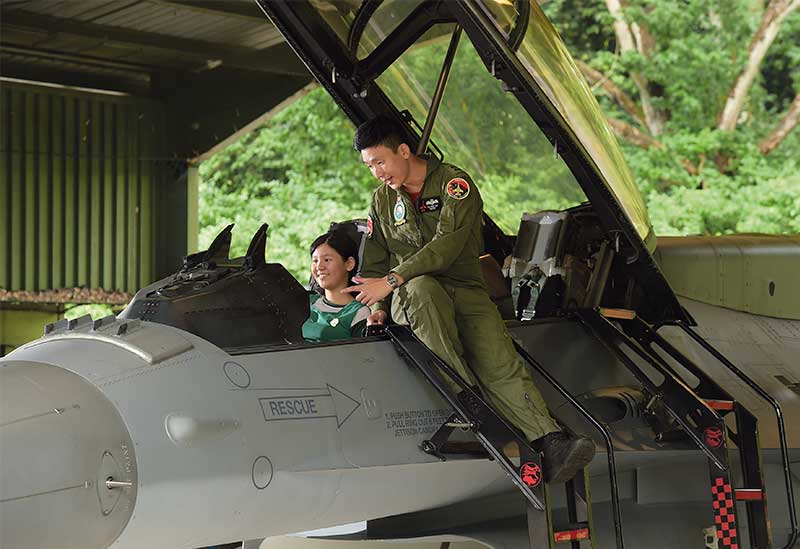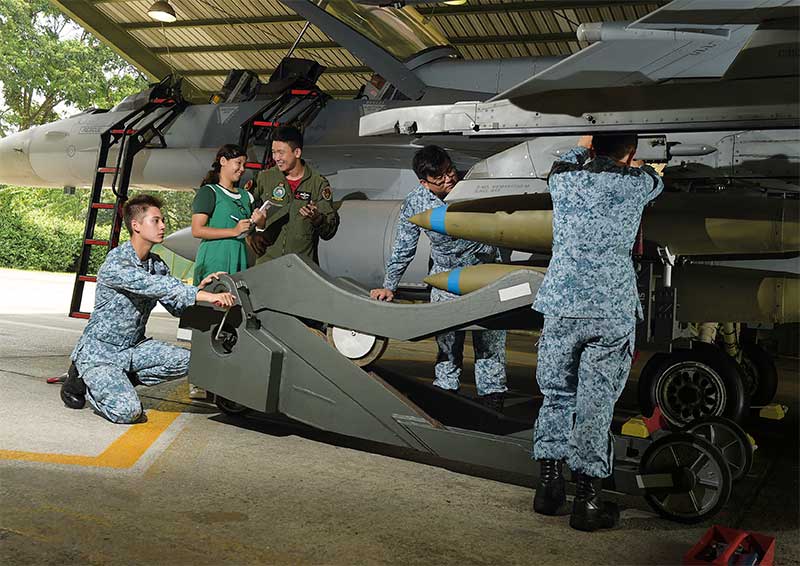TECHNOLOGY
PROTECTORS OF THE SKY
07 Oct 2016
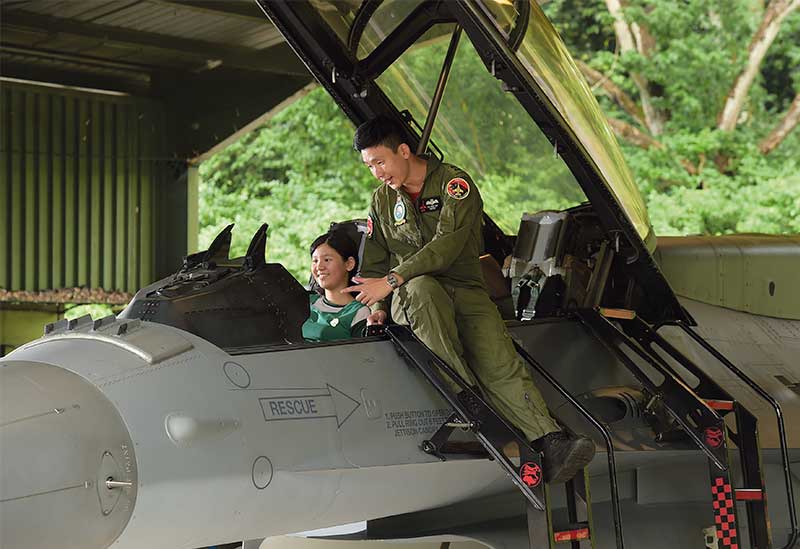
We might catch a glimpse of them -- a flash of silver, or the white contrail lines they leave behind -- as they weave across the pale blue Singapore sky.
Sometimes, we grimace in irritation at the roar of fighter jet engines as they fly overhead. But how many of us know what it really takes to make our Republic of Singapore Air Force (RSAF) fly?
Early days
The story of Singapore's first fighter squadron -- 140 SQN -- began in 1970. Armed with little more than some second-hand Hawker Hunter aircraft, it was tasked with the daunting mission of defending Singapore's skies.
The squadron, which celebrated its 45th anniversary last year, has grown and is part of a much larger force which includes transport aeroplanes, helicopters and unmanned aerial vehicles.
But what brings these mighty machines together is its community. Here is a group of people who have willingly dedicated their lives to this country.
Air Force Engineers loading weapons onto the fighter jet. Six bombs and four missiles can be loaded onto the F-16 plane at any particular time. Meet the team There are many different jobs in the RSAF, ranging from the technicians who work behind the scenes to the pilots who fly on the front lines. The technicians specialise in spotting defects and are responsible for the loading of bombs and missiles onto the planes. They also check that everything is functioning properly. The technician's job takes great skill and is often underestimated. Bombs must be latched onto the fighter jets correctly or they could affect the pilot's aim or even fall off midway through the flight. It is a difficult task, as the bombs must be balanced beneath the wings equally so that the plane does not tip to one side. Technicians must have eagle eyes, and cannot miss any defects -- the smallest crack or even a wire out of place could be dangerous, even lethal, for the pilots. Aerial combat The pilots are often perceived as the "superstars" of the RSAF. Theirs might seem like a popular, even glamorous, job, but it is also one of the most stressful. Pilots have to go through strenuous exercise routines and tests, as well as pressure simulators and fitness programmes. Yearly health checks are also conducted to ensure that they are in the pink of health. The pilots hone skills such as gunnery, bombing and missile shooting. While seemingly obvious, their main task is to fly the plane properly. It is no easy task. Inside a fighter jet cockpit, the pilot has hundreds of buttons, levers and switches quite literally surrounding him. Above that is the plane's "heads-up display", with even more screens, buttons and numbers to keep track of all. Pilots must memorise the functions and use nearly all of these instruments while flying. Like the drummer of a rock band, they must have near-perfect hand-eye co-ordination -- a control stick in one hand and a throttle in the other, and two pedals at their feet. To be the best The pilots and crew members of 140 SQN embody the high level of skills required to make our fighting force a fierce one. This year, 140 SQN took home more than half of 15 awards in an annual competition among Singapore's fighter squadrons. They have also bagged the title of Best Fighter Squadron a record 13 times since the awards began. I've only introduced two jobs here, but there are many others that make up the Air Force. The RSAF is made of many layers, like a rainbow kueh lapis. Each layer is well-defined and, together, they work harmoniously to create an outstanding effect. Everyone in the Air Force community has sacrificed something and devoted countless hours to become the best at their job. So the next time you hear the deafening roar of an engine, or see those white lines crisscrossing the sky, don't just look at the plane but think of the people who make it fly -- and say a silent "thank you" for everything they do. |
ALSO READ IN TECHNOLOGY

AI joins the fight in national cyber defence exercise
12 Nov 2025
AI and closer collaboration among agencies and industry are taking centre stage in this year’s Critical Infrastructure Defence Exercise (CIDeX).
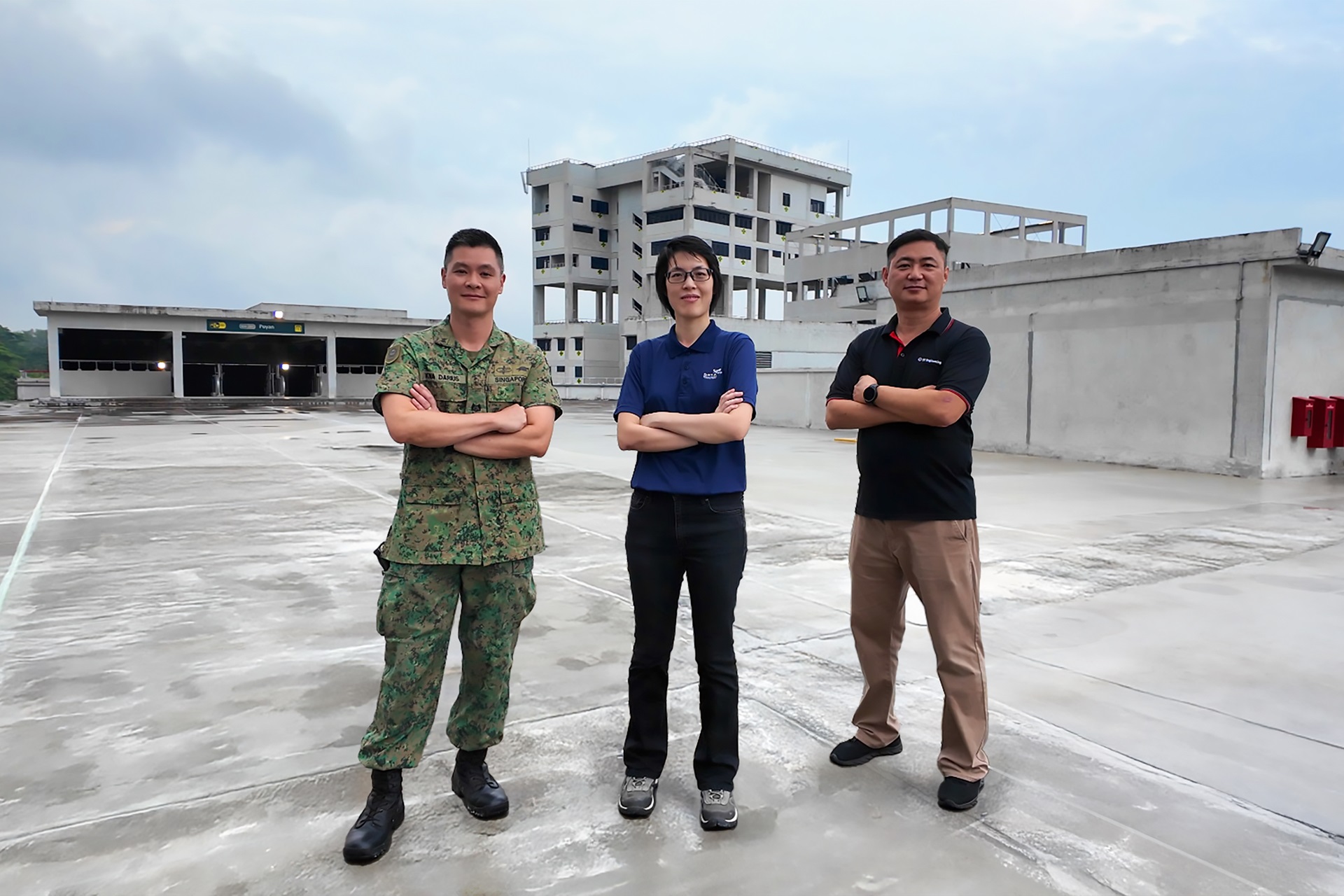
They built this city
01 Oct 2025
Turning vision to reality: the team behind SAFTI City clinches the Defence Technology Prize 2025 Team (Engineering) Award!
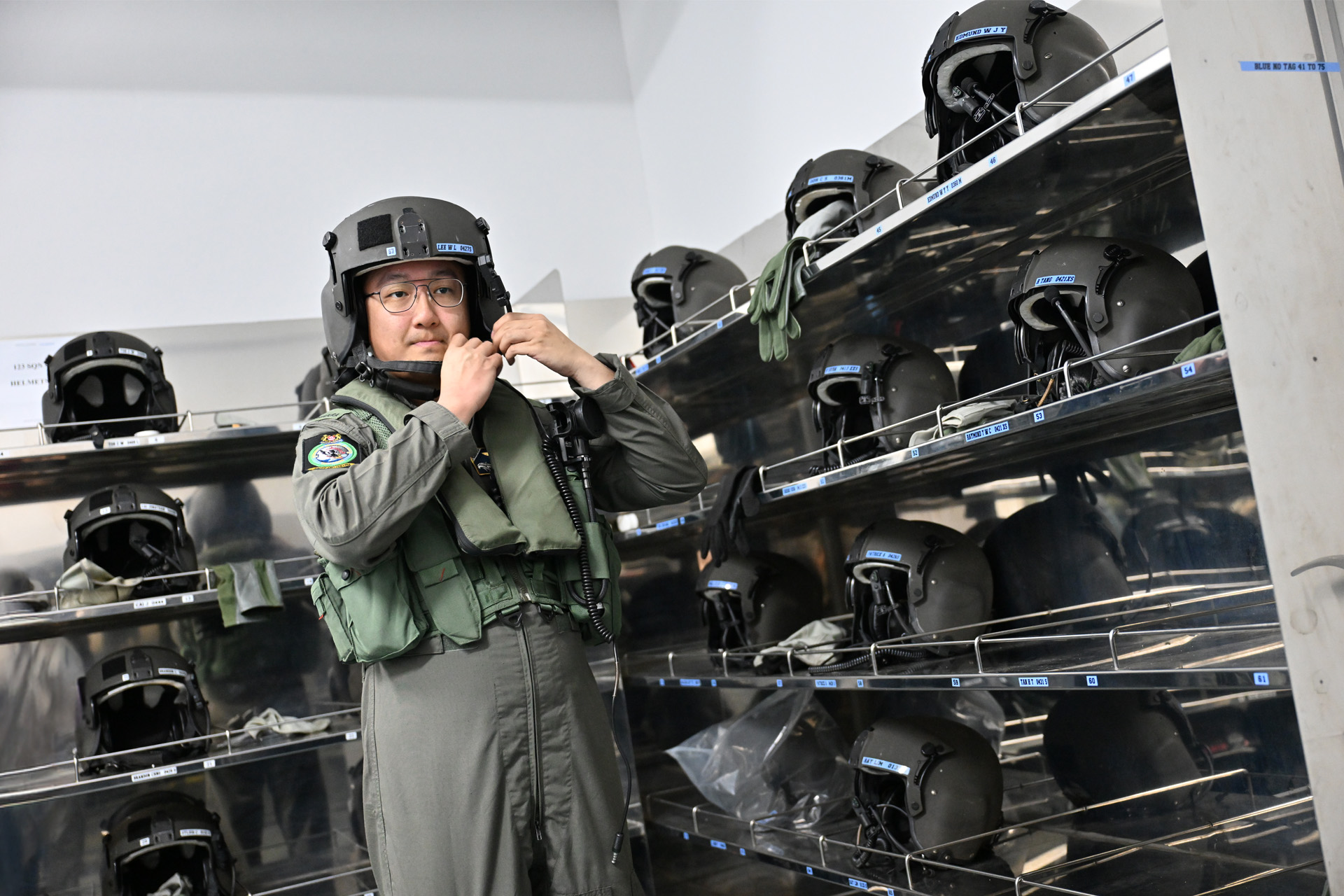
Operating over skies & seas
22 Aug 2025
This gear is designed to help a Sensor Supervisor survive emergencies in the air and at sea.

